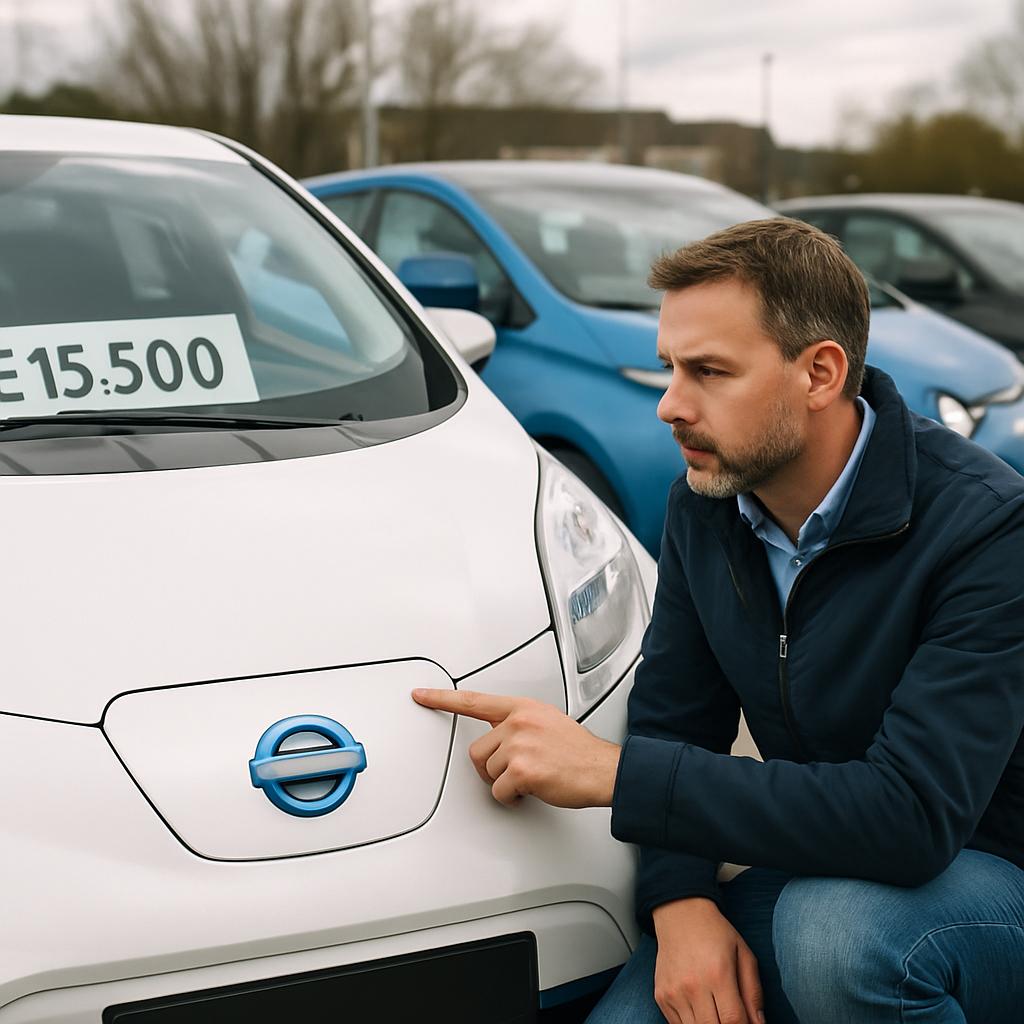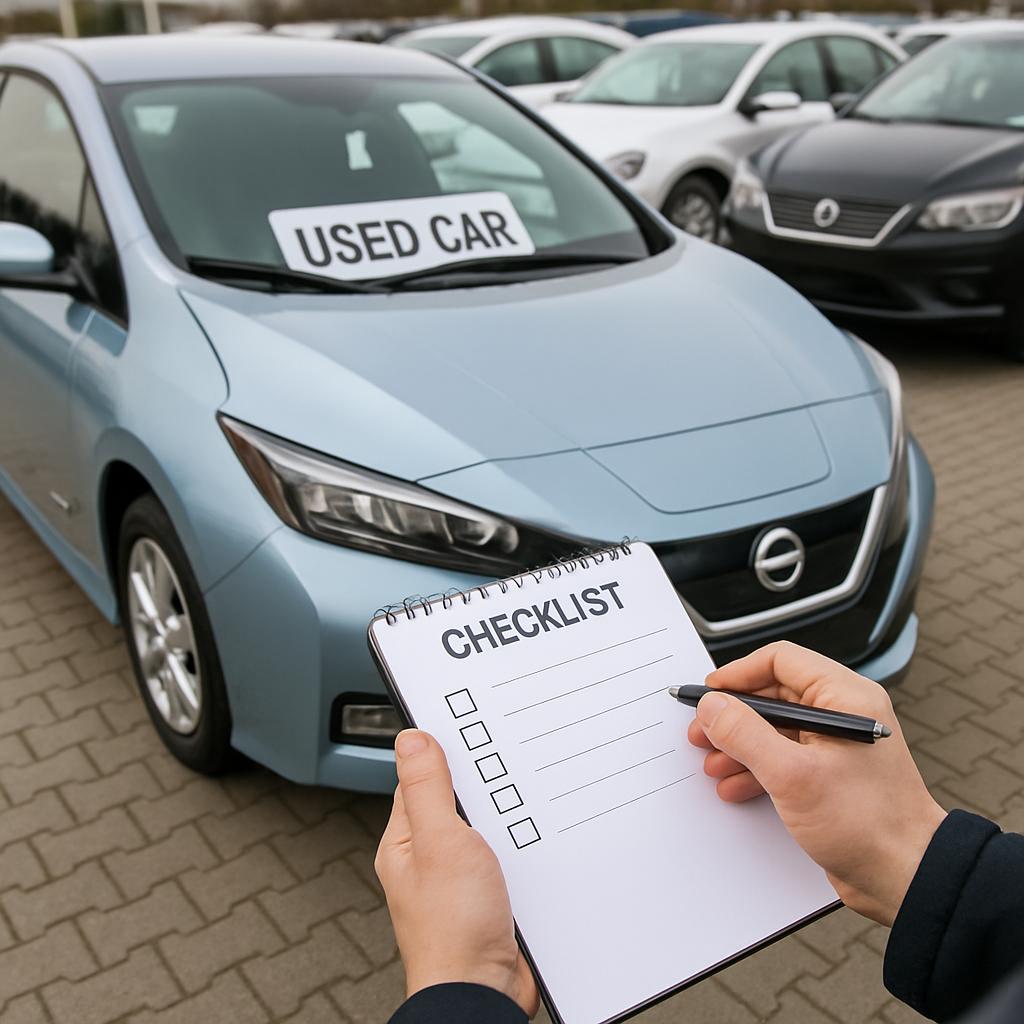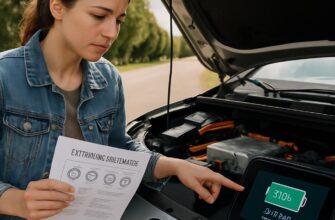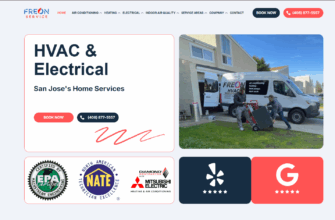Buying a pre-owned electric car in Europe can feel like shopping in a specialist market: enticing deals, technical quirks, cross-border opportunities and traps if you move too fast. This guide walks you through practical steps, inspection priorities, negotiation tactics and paperwork so you can hunt down a genuine bargain without getting burned.
- Why used EVs are an attractive option today
- Set your budget and account for hidden costs
- Where to search across Europe for the best deals
- Reading the listing: what to trust and what to verify
- What to inspect in person: a practical checklist
- Battery health: how to evaluate range and state of health
- Interpreting service history and software updates
- Negotiation tactics that work for EVs
- Timing your purchase for the best bargains
- Cross-border buying in Europe: practicalities and pitfalls
- Taxes, VAT and registration — what to expect
- Financing and warranties for used EVs
- Insurance considerations unique to EVs
- How to spot and avoid common scams
- Tools and diagnostics every buyer should know
- Charging compatibility and infrastructure checks
- Resale planning: think like a second owner
- A real-world bargain hunt: my experience buying an EV in Europe
- Final checklist before you sign
- Keep learning and compare frequently
Why used EVs are an attractive option today
Electric cars have matured quickly over the last decade, and several early adopters are now selling perfectly usable vehicles at reduced prices. That creates a supply pulse in many European markets where depreciation has already eaten the initial premium but the vehicle still offers years of low-cost driving.
Lower running costs, simpler mechanicals and fewer parts that wear out make EVs especially good candidates for used purchases. You can buy today’s tech at yesterday’s margins—if you know what to look for and where to look across national borders.
Set your budget and account for hidden costs
Start with a clear total budget, not just the advertised price. Include insurance, registration, possible battery repairs or replacements, charging accessories, and any cross-border taxes or compliance work if you’re importing the car from another country.
Factor in energy costs in your area and typical annual mileage; a cheaper car that can’t meet your daily range or needs frequent public fast charging may cost more over time. Plan for a small contingency fund—around 10% of the car’s price—to cover any unexpected service items within the first year.
Below is a simple table that highlights common extra costs to consider when buying a used EV in Europe.
| Item | Typical range |
|---|---|
| Battery health testing / diagnostic | €50–€200 |
| Local registration / plates | €50–€600 (varies by country) |
| Minor service and tires | €150–€600 |
| Charging cable / home wallbox installation | €50–€1,200 |
Where to search across Europe for the best deals
Start locally on mainstream classifieds and dealer sites, but don’t stop there. Regional markets differ: Germany, the Netherlands, Norway and France often have deep inventories of EVs with varying price points. Some countries have earlier adoption curves, meaning more used supply and drifted prices.
Expand your search to specialist EV marketplaces, auction platforms, and dealer networks that list export-ready cars. Use saved searches and alerts—good bargains move fast. Consider suburban auctions and fleet rotation sales where companies refresh electric fleets more frequently.
- Dealer certified pre-owned programs (good for warranties)
- Online classifieds and aggregators (wider selection)
- Export auctions and fleet sales (potential bargains)
Reading the listing: what to trust and what to verify
Photos, mileage and service history tell much, but listings can omit crucial details about battery condition, past collisions or software restrictions. Treat every advertisement as a starting point, not a promise.
Look for explicit battery warranty statements, recent service invoices, evidence of firmware or software updates, and any mention of repaired crash damage. If a seller claims “battery like new,” ask for diagnostic screenshots or a battery health report to back it up.
What to inspect in person: a practical checklist
Bring a checklist to each viewing and, when possible, a portable charger or cable to test charging compatibility. Don’t skip a test drive—EVs expose many issues in motion, from unusual noises to inconsistent regenerative braking.
Check the tires, seals, underbody and look for signs of corrosion. Inspect the charging port for bent pins or discoloration and verify the car accepts both AC and DC charging if it originally supported both. Confirm that key software features—navigation, remote apps and HVAC scheduling—work as advertised.
- Verify VIN and service records match the seller’s claims.
- Test charge with an appropriate cable and, if possible, at a fast charger.
- Observe battery level behavior during a short drive and on the dashboard range estimate.
Battery health: how to evaluate range and state of health
The battery is the most important component in a used EV and the most expensive to replace. A practical approach is to check state of health (SoH) readings where accessible—many brands allow a dealer or third-party diagnostic tool to report SoH and cell imbalance data.
Expect gradual degradation: most lithium-ion packs lose a few percent of capacity per year depending on usage, climate and charging habits. Many manufacturers offer battery warranties that cover significant capacity loss for about eight years or a wide mileage range; this can affect the car’s residual value.
Don’t rely solely on percentage estimates. Instead, compare the car’s original WLTP or EPA-rated range to the present usable kWh or range figure under realistic driving conditions. A practical test is to drive a known route and observe how many kilometers are used per percentage point or kWh—this gives a clearer picture of real-world range.
Interpreting service history and software updates
EVs evolve via software almost as much as hardware. Regular firmware updates improve efficiency, charging speed and thermal management. A car without recent software updates may be missing performance and reliability improvements that affect battery longevity.
Service records should show regular checks of coolant systems (for liquid-cooled packs), brake servicing (EVs still need brakes), and any electrical recalls. Ask whether the vehicle had software recalls applied; dealers can often provide a printout or online record of applied updates.
Negotiation tactics that work for EVs
Use real data to justify your offer: battery health reports, comparable offers, and recent repair bills. Sellers often price used EVs for the novelty of electric motoring rather than the actual utility remaining in the battery—pinpoint that gap and negotiate accordingly.
If you plan to export the vehicle, factor expected compliance work into your offer. Being flexible on pickup timing or payment method can also create negotiating leverage. When possible, request a short warranty or written guarantee on anything the seller claims was recently fixed.
Timing your purchase for the best bargains

Watch seasonal patterns and incentives. End-of-quarter or end-of-year periods are often when dealers clear inventory to meet sales targets, which can create price softness. Changes to national incentives, tax rules or registration fees also ripple through used prices—monitor policy news in target countries.
Keep an eye on new model launches. When a successor model arrives, the previous generation’s used prices can dip, creating buying windows. Patience pays: if you can wait a few weeks while monitoring listings, a substantial discount may appear.
Cross-border buying in Europe: practicalities and pitfalls
Buying across borders expands your options but adds paperwork: export plates, purchase invoices, customs if applicable, and registration rules differ among EU members and non-EU countries. For intra-EU purchases, VAT is typically already settled, but you must confirm the vehicle’s tax status before transfer.
Arrange transport or drive the car home with temporary plates and insurance that covers cross-border travel. Verify that the vehicle’s emissions and safety equipment meet the receiving country’s standards—EVs are simpler here, but headlight alignment, speedometer settings and homologation paperwork still matter.
Taxes, VAT and registration — what to expect
Always check the receiving country’s rules before agreeing to a purchase. Some countries impose additional registration taxes based on battery capacity, CO2 equivalent or market value. These can change the total cost dramatically, so get a pre-purchase estimate from local registration authorities or a tax consultant.
When a vehicle moves between EU countries as a used sale, VAT is generally not due if the seller already paid it, but rules vary and records must be clean. Keep all invoices, seller declarations and transport receipts to simplify import or registration processes.
Financing and warranties for used EVs
Traditional car loans and leasing options apply to used EVs too, but lenders sometimes scrutinize residual values and battery risk. Choose a lender familiar with EVs and ask whether the loan terms account for battery-related depreciation differently than for internal combustion vehicles.
Certified pre-owned or dealer-backed warranties reduce risk and can be a decisive bargaining chip. When buying privately, consider paying a bit more for a short dealer warranty if it covers battery health—this may save you from a costly replacement later.
Insurance considerations unique to EVs
Insurers price policies based on repair costs and parts availability as well as theft risk and driver profile. Battery-related repairs can be costly, and some models require special bodyshop skills. Get insurance quotes for the exact model and year before completing the purchase to avoid surprises.
Also check roadside assistance coverage for EV-specific situations such as depleted battery recovery and on-site mobile charging. It’s a small addition that prevents being stranded in regions with sparse charging infrastructure.
How to spot and avoid common scams
Beware of sellers who discourage independent inspections, provide inconsistent paperwork, or pressure you to transfer money quickly. Scams often play on scarcity—if a deal seems much better than similar listings, dig deeper and ask for verifiable documentation before paying a deposit.
Use escrow for cross-border transactions if possible, and verify VINs against national databases. If a seller refuses a short delay for a buyer’s inspection or insists on cash-only deals without receipt, walk away. A genuine bargain worth buying will survive reasonable checks.
Tools and diagnostics every buyer should know
Modern vehicles expose a lot of data. Mobile apps and OBD tools (onboard diagnostics) can read battery state of health, charge cycles and more. Carry a basic set of test questions and, where supported, ask the seller to connect a diagnostic tool to print a recent log.
Apps vary by manufacturer; some require dealer-level access, while third-party apps work on more generic data. If unfamiliar, consider hiring a local EV-savvy mechanic or electrician to run a pre-purchase inspection—it’s money well spent on higher-end purchases.
Charging compatibility and infrastructure checks
Confirm the vehicle’s charging inlet type and onboard charger capacity. If you plan to use home charging, ensure the included cables match local sockets and consider a certified wallbox installation to maximize daily charging speed and safety.
Map fast charging availability along your typical routes. Some EU regions have dense fast-charging networks, while others are spotty. A car with limited DC charging capability may still be a bargain if your driving patterns are local, but it’s less suitable for long-distance travel.
Resale planning: think like a second owner
Even if you’re buying for long-term use, consider how easy the car will be to sell in a few years. High-demand models with good battery warranties and a robust service record keep their value. Avoid rare or niche models with limited parts support unless you have a specific reason.
Keep comprehensive records of any maintenance, part replacements and charging patterns. Future buyers react positively to documented care—an honest history can increase resale value and speed a future sale.
A real-world bargain hunt: my experience buying an EV in Europe
A few years ago I bought a used electric hatchback from a regional dealer in southern Germany, driven mainly on short commutes and with a full recorded service history. The initial price looked average until I discovered the seller had fitted a recent battery management update and a new wallbox at their home, which raised the car’s practical daily value.
I arranged an independent battery diagnostic, which confirmed SoH at 87%—reasonable for the age and mileage. Armed with that data, I negotiated a lower price that reflected the predicted near-term decline and secured a three-month dealer warranty for electrical faults. The result was a reliable daily car at a price below local market averages.
Final checklist before you sign

Before transferring funds, verify VIN matches registration documents, ensure any outstanding finance against the vehicle is cleared, and request a signed bill of sale stating mileage, condition and any agreed repairs. If importing, confirm the seller provides all export paperwork and that you have a plan for transport and temporary insurance.
Arrange a short period for immediate post-sale checks—take the car to a trusted mechanic or the dealer who provided diagnostics. That short window can catch hidden issues and preserve your ability to pursue remedies if the seller promised fixes that were not completed.
Keep learning and compare frequently
The used EV market is dynamic. Prices, incentives and model availability shift quickly across regions. Keep a folder of saved searches, notes and screenshots of promising listings to compare and spot true bargains rather than impulsive buys.
If you enjoyed practical guides like this, check our in-depth coverage of technology and mobility topics for the latest tips and market updates at https://themors.com/technology-innovation-news/.
If you’re ready to begin your search, take these steps, prepare your inspection toolkit, and be patient—the best bargains reward careful shoppers. For more articles, reviews and timely advice on electric vehicles and technology, visit our site and explore other materials at https://themors.com/.









